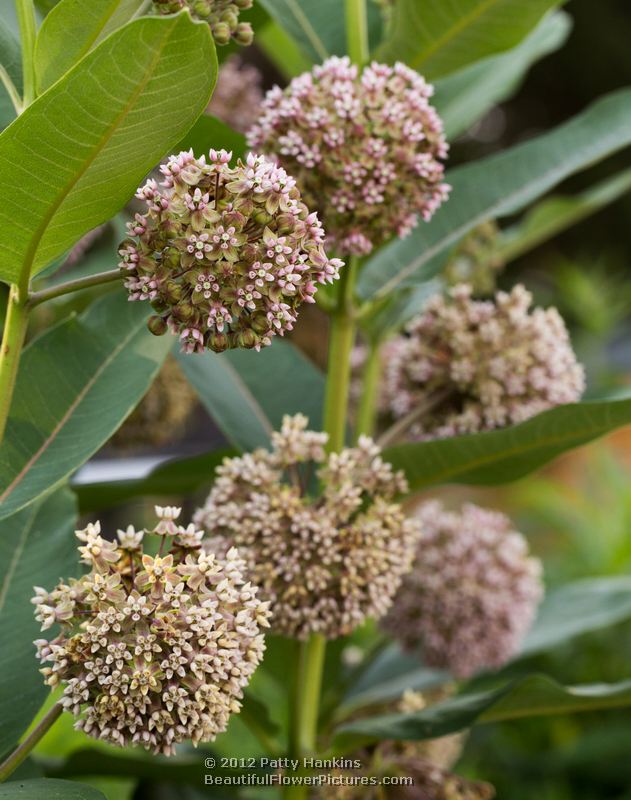© 2012 Patty Hankins
I don’t know about you – but milkweed was one of the first native plants I learned about – long before I even knew what a native plant was. I just remember seeing the round balls of blossoms and having lots of fun blowing around the seeds from the milkweed pods in the fall. I’m not even sure if I knew that they were the same plant – but I certainly knew what they were.
© 2012 Patty Hankins
Common Milkweed – asclepias syriaca- is a very common and useful wildflower. Native to most of the US and Canada, milkweed is a member of the Asclepiadaceae family. Another popular member of this family is butterfly weed. Milkweed grows to about 6 feet tall – with multiple balls of blossoms on each stalk. The balls of blossoms I photographed were about 4 inches in diameter.
The flowers of the milkweed and other members of the Asclepiadaceae family are very distinctive. Each flower has five parts with inward curving horns at the top – and outward curving umbels below. Common milkweed blooms in late spring through mid-summer.
© 2012 Patty Hankins
Milkweed has a long history of being a very useful plant – not just for humans – but also for wildlife. The fluffy seeds of the milkweed pods were used by early settlers to stuff mattresses and pillows. During World War II, the fluff was used in life preservers and uniform linings. The fibers can be used to create paper, thread and cloth, while various dyes have been made from the juice. While eating large quantities of milkweed can be poisonous, it has been used to flavor soups and the tender spring stalks were eaten as a vegetable.
Milkweed has been used medicinally for centuries. Native Americans used it to treat everything from warts to stomach ailments. Some tribes used is as a contraceptive. Milkweeds also contain latex – which means the juice can be used as an instant wound covering. The family name for these useful flowers comes from Asclepius – the Greek hero of medical arts.
© 2012 Patty Hankins
In the natural world, milkweed plays a vital role in the circle of life. Larvae of several species of butterflies, including monarchs, feed on the leaves – which helps make the caterpillars and butterflies toxic to birds. Once the caterpillar emerges from it’s cocoon, the butterflies feed on the nectar of the milkweed plants.
© 2012 Patty Hankins
More information about Common Milkweed is available on the following websites
Lady Bird Johnson Wildflower Center
Robert Freckman Herbarium – UW Stevens Point




